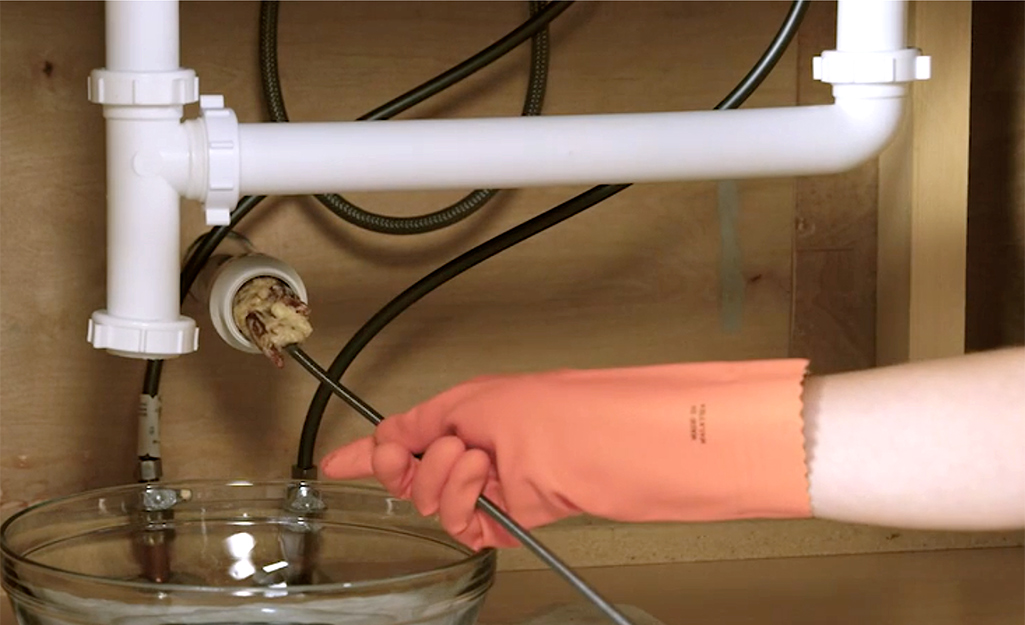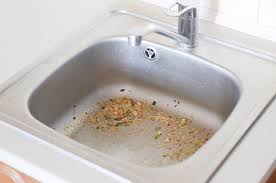Almost everyone will have their unique conception in relation to Repairing Common Household Plumbing Issues.

Blocked cooking area sinks are one of one of the most usual drainage issues house owners face. And what's more, it's a really unpleasant and also unpleasant sight. Envision going to the sink to do your meals as well as figuring out that the drain is blocked and also water can not move down quickly.
The majority of clogged water drainages are caused by food debris, fat, oil, as well as soap fragments. They block the sink and also make it hard for water to decrease the drain promptly. While it is alluring to put a call through to the plumbing professionals, there are a couple of DIY hacks you could attempt first prior to making that call.
In this article, we will be looking at five straightforward steps you can take to free your kitchen area sink from obstructions and save you from the pain and also embarrassment of taking care of a clogged kitchen area sink.
1. Usage Boiling Water
When confronted with a clogged up sink, the first thing you should try is to pour boiling water down the drainpipe. That has to do with one of the most straightforward remedy to clogged sinks and drainages. Boiling water assists reduce the effects of the bits as well as particles causing the blockage, specifically if it's soap, oil, or grease particles, and in a lot of cases, it can flush it all down, and your sink will certainly be back to regular.
Since hot water might melt the lines as well as cause even more damages, do not try this approach if you have plastic pipes (PVC). If you utilize plastic pipelines, you may wish to stick to utilizing a bettor to get debris out.
Using this method, switch on the faucet to see just how water flows after putting warm water down the drain. If the blockage lingers, try the process once more. Nonetheless, the blockage could be much more consistent in many cases and also need more than simply boiling water.
2. Maybe it's the Garbage Disposal
In lots of instances, the obstruction might be due to a blockage in the disposal. Usage pliers instead.
You can discover the adhering to choice to unclog your kitchen sink if this does not function.
3. Try a Plunger
If the problem is not from the waste disposal unit, you can attempt utilizing a bettor. Plungers are typical residence devices for this event, as well as they can come in handy if you utilize them effectively. A flat-bottomed bettor is most appropriate for this, but you can make do with what you have is a commode bettor.
Comply with the following simple actions to utilize the bettor successfully:
Secure the drain with a cloth and also fill up the sink with some hot water
Place the bettor in position over the drainpipe and also begin diving
Check to see if the water runs freely after a couple of dives
Repeat the procedure till the drain is cost-free
4. Baking Soda and Vinegar
As opposed to utilizing any kind of form of chemicals or bleach, this technique is much safer and not hazardous to you or your sink. Sodium bicarbonate and vinegar are day-to-day house things made use of for several various other points, and they can do the method to your kitchen area sink.
Firstly, get rid of any kind of water that is left in the sink with a cup.
Then pour a good amount of baking soda down the drain.
Pour in one cup of vinegar.
Seal the water drainage opening and also permit it to settle for some minutes.
Pour hot water down the drain to melt away various other persistent deposit as well as bits.
Following this easy method can work, and you can have your cooking area sink back. Repeat the process as long as you deem essential to free the sink of this debris entirely.
5. Use a Hanger
Making use of a cord towel hanger or a plumber's snake if you have one can do the trick. All you require do is correct the hanger to go down the drainpipe while you meticulously choose out the particles creating the obstruction.
Run hot water away hereafter to see exactly how effective you were.
Final Words
Attempting these few methods could conserve you the expenses of having a plumber check it. In lots of cases, a plumber is what we need. In cases where you find it hard to unblock the sink even after attempting all these methods, it may be time to leave it to the professionals.
Get in touch with professional plumbing firms to repair your drainage issues as well as other different house plumbing needs.
Blocked kitchen area sinks are one of the most typical drainage issues house owners face. Envision going to the sink to do your dishes and locating out that the drainpipe is obstructed and also water can not stream down quickly.
They block the sink as well as make it hard for water to go down the drain quickly. When encountered with a blocked sink, the first thing you need to try is to pour boiling water down the drainpipe. Boiling water assists neutralize the bits and particles triggering the clog, specifically if it's grease, soap, or oil fragments, and in several cases, it can purge it all down, and your sink will be back to typical.
How to Unclog a Kitchen Sink
Take the Plunge
Start your efforts by plunging. Use a plunger with a large rubber bell and a sturdy handle. Before getting to work on the drain, clamp the drain line to the dishwasher. If you don t close the line, plunging could force dirty water into the dishwasher.
Fill the sink with several inches of water. This ensures a good seal over the drain.
If you have a double sink, plug the other drain with a wet rag or strainer.
Insert the plunger at an angle, making sure water, not air, fills the bell.
Plunge forcefully several times. Pop off the plunger.
Repeat plunging and popping several times until the water drains.Clean the Trap
The P-trap is the curved pipe under the sink. The trap arm is the straight pipe that attaches to the P-trap and runs to the drain stub-out on the wall. Grease and debris can block this section of pipe. Here s how to unclog a kitchen sink by cleaning out the trap:
Remove as much standing water from the sink as possible.
Place a bucket under the pipe to catch the water as it drains.
Unscrew the slip nuts at both ends of the P-trap. Use slip-joint pliers and work carefully to avoid damaging the pipes or fasteners.
If you find a clog, remove it. Reassemble the trap.
If the P-trap isn t clogged, remove the trap arm and look for clogs there. Run the tip of a screwdriver into the drain stub-out to fetch nearby gunk.Spin the Auger
With the trap disassembled, you re ready to crank the auger down the drain line.
Pull a 12-inch length of cable from the auger and tighten the setscrew.
Insert the auger into the drain line, easing it into the pipe.
Feed the cable into the line until you feel an obstruction. Pull out more cable if you need to.
If you come to a clog, crank and push the cable until you feel it break through. The cable will lose tension when this happens.
Crank counterclockwise to pull out the cable, catching the grime and debris with a rag as the cable retracts.

I have been very intrigued by Do It Yourself Plumbing Solutions and I'm hoping you liked the blog post. Those who liked our article please do not forget to share it. Thanks a bunch for your time. Please check up our website back soon.
Get relief now!